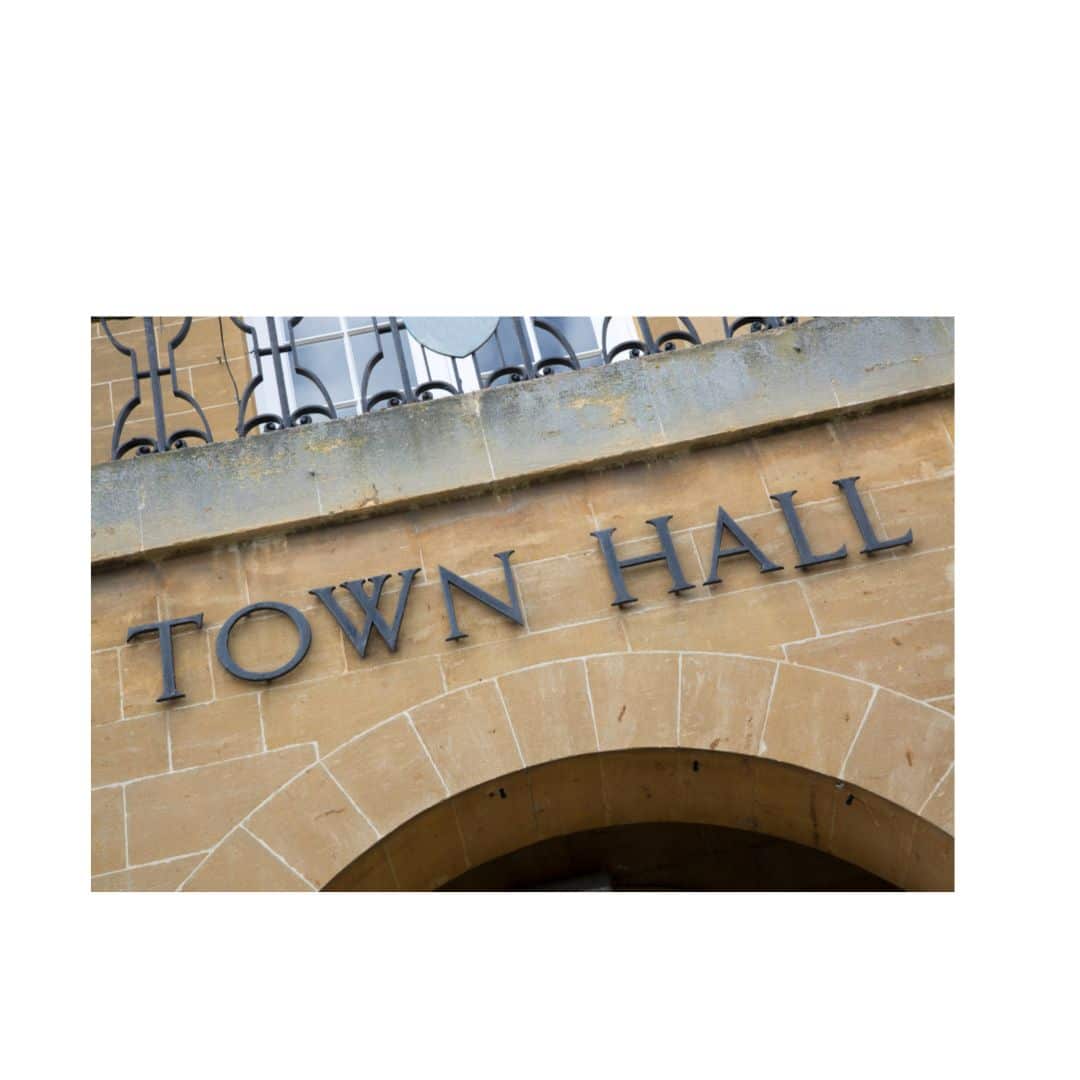

In this post, we will delve into real-life examples of local councils across Australia that have implemented highly effective road safety initiatives. Our aim is to showcase their strategies, highlight the impressive results they have achieved, and share the valuable lessons they have learned along the way. We believe that by exploring these success stories, we can inspire and inform other councils, fostering a collaborative effort towards creating safer road environments for our communities. So let’s dive in and discover the innovative approaches that have made a tangible difference in road safety across various Australian local councils.

Road safety is a paramount concern for local councils across Australia, and the City of Melbourne has set an exemplary standard with its Safer Streets Program. Through a combination of innovative strategies, community engagement, and infrastructure enhancements, the program has successfully created safer road environments and protected vulnerable road users. In this blog post, we will explore the City of Melbourne’s Safer Streets Program in detail, examining its strategies, remarkable results, and key lessons that can inspire and inform other local councils in their pursuit of road safety excellence.
The Safer Streets Program, launched by the City of Melbourne, aims to enhance road safety within the municipality and safeguard the well-being of all road users. The program focuses on reducing vehicle speeds, improving infrastructure, and increasing public awareness.
The City of Melbourne employed a multi-faceted approach to address road safety challenges:
a) Lowering speed limits in high-risk areas: The council identified high-risk areas and implemented reduced speed limits to create safer environments for pedestrians, cyclists, and motorists. This strategy aimed to reduce the severity of accidents and enhance overall road safety.
b) Implementing traffic calming measures: To curb speeding and create safer streets, the Safer Streets Program introduced various traffic calming measures, including the installation of strategically placed speed humps. These humps effectively slow down vehicles, encouraging drivers to be more cautious and attentive.
c) Enhancing pedestrian infrastructure: Recognizing the importance of pedestrian safety, the program focused on improving infrastructure for pedestrians. This included the installation of pedestrian crossings, raised platforms, and wider footpaths, promoting safer and more accessible journeys for pedestrians.
The Safer Streets Program has yielded impressive results in improving road safety within the City of Melbourne:
a) Reduction in accidents and injuries: Statistical data showcases a significant decline in the number of accidents and injuries in areas where the program was implemented. This reduction underscores the effectiveness of the strategies employed in enhancing road safety.
b) Positive community feedback: The program received positive feedback from the community, with residents and road users expressing appreciation for the safer road environments created. The community’s active involvement and support have been instrumental in achieving the program’s objectives.
The Safer Streets Program offers several valuable lessons for other local councils seeking to implement effective road safety initiatives:
a) Community engagement is crucial: Involving the community from the early stages of planning and implementation fosters a sense of ownership and ensures that initiatives align with the community’s needs and concerns. Engaging residents, businesses, and road user groups through consultations and feedback channels is vital for successful road safety programs.
b) Comprehensive approach is essential: Addressing road safety challenges requires a comprehensive approach encompassing speed management, infrastructure improvements, and awareness campaigns. A combination of strategies tailored to specific locations and road user needs enhances the effectiveness of initiatives.
c) Collaboration between stakeholders: Effective road safety initiatives necessitate collaboration between local authorities, road safety experts, and other relevant stakeholders. Building partnerships and leveraging expertise from different domains foster innovative solutions and shared responsibility in achieving safer roads.
The City of Melbourne’s Safer Streets Program serves as a model for other local councils in Australia to emulate. By implementing a combination of speed management, infrastructure enhancements, and community engagement, the program has successfully created safer road environments and protected vulnerable road users. The remarkable results achieved and the valuable lessons learned from the program’s implementation should inspire and guide other councils in their pursuit of road safety excellence.

In the pursuit of creating safer road environments, the Brisbane City Council has introduced the highly successful Safer Suburbs Program. Through a comprehensive range of strategies, innovative infrastructure enhancements, and targeted initiatives, the council has successfully improved road safety and protected vulnerable road users. In this blog post, we will delve into the details of Brisbane City Council’s Safer Suburbs Program, exploring its strategies, notable achievements, and key lessons that can inspire and guide other local councils in their road safety endeavors.
The Safer Suburbs Program, initiated by the Brisbane City Council, aims to prioritize road safety and enhance the overall safety of suburbs within the city. The program focuses on improving pedestrian and cyclist safety, reducing accidents, and creating a safer environment for all road users.
The Brisbane City Council has implemented a range of strategies to achieve its road safety objectives:
a) Traffic calming measures: The program includes the implementation of traffic calming measures to reduce speeding and enhance safety. These measures encompass the installation of speed humps, raised crossings, and other traffic-calming devices strategically placed in high-risk areas. Speed humps, in particular, effectively slow down vehicles, promoting safer driving behaviors.
b) Enhanced signage and technology: The council utilizes advanced signage and technology to improve road safety. This includes the installation of electronic speed signs, interactive crosswalks, and smart traffic management systems. These technologies provide real-time information, promote awareness, and encourage responsible driving practices.
c) Infrastructure enhancements: Recognizing the importance of infrastructure in road safety, the program focuses on improving pedestrian and cyclist infrastructure. This includes the construction of dedicated bike lanes, wider footpaths, and the installation of pedestrian crossings equipped with safety features such as audible signals and tactile indicators.
The Safer Suburbs Program has achieved remarkable results in enhancing road safety in Brisbane:
a) Reduction in accidents: Through the implementation of traffic calming measures and infrastructure enhancements, the program has contributed to a significant reduction in accidents and collisions. Safer road environments have resulted in fewer injuries and fatalities among pedestrians, cyclists, and motorists.
b) Improved safety for vulnerable road users: The program has specifically targeted the safety of vulnerable road users, such as pedestrians and cyclists. The introduction of dedicated bike lanes, raised crossings, and improved pedestrian infrastructure has enhanced their safety and encouraged active transportation.
c) Recognition and awards: The efforts of the Brisbane City Council in implementing the Safer Suburbs Program have been acknowledged and recognized through various awards and accolades. This recognition highlights the program’s effectiveness and the positive impact it has had on the community.
2. Speed Humps offer Protection for pedestrians and vulnerable road users:
Speed humps in residential areas and near schools safeguard pedestrians, including children and elderly individuals.
Slower speeds around crosswalks, intersections, and pedestrian-heavy zones reduce the risk of accidents involving pedestrians and cyclists.
The Safer Suburbs Program offers valuable lessons for other local councils aiming to enhance road safety:
a) Comprehensive planning and data analysis: Thorough planning, based on accurate data analysis, is crucial for identifying high-risk areas and designing effective road safety interventions. Regular monitoring and evaluation enable continuous improvement and evidence-based decision-making.
b) Technology as an enabler: Leveraging advanced technologies, such as electronic signage and smart traffic management systems, can significantly enhance road safety initiatives. Real-time information, interactive features, and intelligent systems contribute to better driver behavior and safer road environments.
c) Collaboration and stakeholder engagement: Engaging with stakeholders, including community members, road user groups, and local businesses, fosters a sense of shared responsibility and ownership. Collaborative efforts maximize the effectiveness of road safety programs and ensure sustainable outcomes.
Brisbane City Council’s Safer Suburbs Program exemplifies a proactive and comprehensive approach to road safety. Through traffic calming measures, infrastructure enhancements, and the utilization of advanced technologies, the council has made significant strides in creating safer road environments and protecting vulnerable road users. The program’s success, evident in the reduction of accidents and improved safety outcomes, serves as an inspiration for other local councils.

Perth City Council has taken a proactive stance on road safety and active transportation through its highly successful Safe Active Streets Program. By prioritizing pedestrian and cyclist safety, implementing traffic calming measures, and enhancing connectivity, the council has created safer streets and encouraged active transportation modes. In this blog post, we will explore the details of Perth City Council’s Safe Active Streets Program, including its strategies, noteworthy outcomes, and essential lessons that can inspire and guide other local councils in their road safety initiatives.
The Safe Active Streets Program implemented by the Perth City Council aims to create safer streets for pedestrians and cyclists while promoting active transportation and road safety. The program emphasizes the importance of connectivity, infrastructure enhancements, and community engagement.
The Perth City Council has employed several strategies to achieve its road safety and active transportation goals:
a) Traffic calming measures: The program incorporates various traffic calming measures, including the installation of speed humps, raised crossings, and bike lanes. These measures effectively reduce vehicle speeds and prioritize the safety of pedestrians and cyclists.
b) Improved pedestrian and cyclist infrastructure: The council focuses on enhancing pedestrian and cyclist infrastructure by constructing dedicated bike lanes, wider footpaths, and well-designed crossings. These improvements create a safer and more inviting environment for active transportation.
c) Public space enhancements: The program recognizes the importance of creating vibrant and attractive public spaces to encourage active transportation. This includes the development of green spaces, seating areas, and amenities that promote pedestrian and cyclist usage.
The Safe Active Streets Program has yielded significant results in enhancing road safety and promoting active transportation:
a) Increased participation in active transportation: The program has successfully encouraged more residents to embrace walking and cycling as preferred modes of transport. Improved infrastructure and safer streets have contributed to increased levels of active transportation.
b) Improved road safety: The implementation of traffic calming measures and infrastructure enhancements has resulted in a notable reduction in accidents and injuries. Safer streets and dedicated infrastructure have made a positive impact on the overall road safety within the council’s jurisdiction.
c) Enhanced community satisfaction: The Safe Active Streets Program has garnered positive feedback from the community. Residents appreciate the safer streets and improved infrastructure, which have made walking and cycling more enjoyable and convenient.
The Safe Active Streets Program provides valuable lessons for other local councils looking to prioritize road safety and promote active transportation:
a) Prioritize active transportation infrastructure: Investing in dedicated bike lanes, wider footpaths, and cyclist-friendly crossings encourages active transportation and creates a safer environment for pedestrians and cyclists.
b) Multimodal connectivity is essential: Enhancing connectivity between different transportation modes promotes seamless travel experiences and encourages the use of sustainable transportation options. Integrating pedestrian and cyclist infrastructure with public transit systems creates a cohesive and accessible network.
c) Ongoing monitoring and evaluation: Regular monitoring and evaluation of the program’s impact are crucial for identifying areas of improvement and ensuring continued success. Collecting data on road safety outcomes, usage patterns, and community feedback helps inform future decision-making and resource allocation.
Perth City Council’s Safe Active Streets Program exemplifies a holistic approach to road safety and active transportation. By implementing traffic calming measures, enhancing pedestrian and cyclist infrastructure, and prioritizing community engagement, the council has created safer streets and promoted active transportation modes. The program’s success in increasing participation in active transportation and improving road safety serves as an inspiration for other local councils.
The implementation of successful road safety initiatives by various local councils in Australia demonstrates their commitment to creating safer road environments and protecting the well-being of their communities. The showcased examples of the City of Melbourne’s Safer Streets Program, Brisbane City Council’s Safer Suburbs Program, and Perth City Council’s Safe Active Streets Program highlight the diverse strategies, impressive results, and valuable lessons learned from these initiatives.
The City of Melbourne’s Safer Streets Program exemplifies the power of collaboration and comprehensive planning in improving road safety. By engaging with stakeholders, implementing targeted infrastructure improvements, and utilizing innovative technologies, the council has successfully reduced accidents and created a safer environment for all road users. Speed humps, as a part of the traffic calming measures, have played a vital role in slowing down vehicles and promoting responsible driving behaviors.
Similarly, the Brisbane City Council’s Safer Suburbs Program has made significant progress in enhancing road safety. Through the implementation of traffic calming measures, enhanced signage and technology, and infrastructure improvements, the council has successfully reduced accidents and improved safety for vulnerable road users. The recognition and awards received by the council highlight the effectiveness of their initiatives and inspire other local councils to prioritize road safety.
The Safe Active Streets Program by the Perth City Council demonstrates the importance of prioritizing pedestrian and cyclist safety and promoting active transportation. The implementation of traffic calming measures, infrastructure enhancements, and the creation of vibrant public spaces have not only increased participation in active transportation but also significantly improved road safety. Dedicated bike lanes and wider footpaths, along with Speed Humps Australia’s innovative solutions, have contributed to creating safer streets and fostering a culture of active transportation.
These successful road safety initiatives provide valuable lessons for other local councils across Australia. Comprehensive planning, data analysis, and ongoing monitoring are crucial for identifying high-risk areas and designing effective road safety interventions. Integrating advanced technologies such as electronic signage and smart traffic management systems can significantly enhance road safety efforts. Furthermore, collaboration and stakeholder engagement foster a sense of shared responsibility and ensure sustainable outcomes.
At Speed Humps Australia, we are dedicated to supporting local councils in their road safety endeavors. Our range of high-quality speed humps and traffic calming solutions can effectively reduce vehicle speeds, promote responsible driving behaviors, and create safer road environments. By partnering with Speed Humps Australia, local councils can benefit from our expertise and innovative solutions to enhance their road safety initiatives.
In conclusion, the successful road safety initiatives implemented by Australian local councils serve as inspiring examples for other councils to follow. By prioritizing road safety, implementing effective strategies, and utilizing innovative solutions, local councils can make significant progress in creating safer streets and protecting their communities. Speed Humps Australia is committed to supporting local councils in their pursuit of road safety excellence and providing the best solutions to create safer road environments for everyone. Together, let’s pave the way to a future with fewer accidents and safer roads across Australia.
As our design and production is all handled in house and supplied Australia wide, get in touch with us today to request a quote or discuss how we can help with providing a tailored solution to your unique project requirements.



For 10 years, our focus has been on one thing: to provide one style of product and to do it well.
Our wheel stops, speed humps and rumble bars meet Australian Standards, don’t fade, and we’ve never needed to replace one.

For 10 years, our focus has been on one thing: to provide one style of product and to do it well.
Our wheel stops, speed humps and rumble bars meet Australian Standards, don’t fade, and we’ve never needed to replace one.